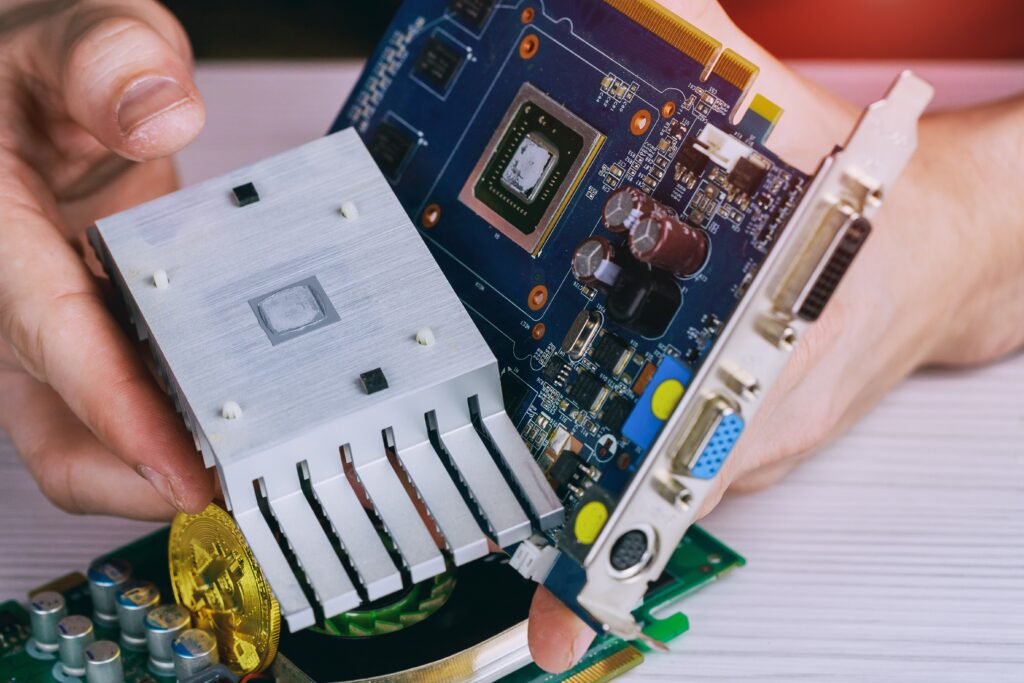Staking is all about rewarding those who support the network. The reward comes in the form of a percentage stake in the annual profit of the platform. Simply put, the more that a node contributes, the higher its stake (and therefore its crypto node rewards) will be.
Stakers earn rewards based on the number of coins they stake and the time they’ve locked their coins. This is in contrast to Proof-of-Work (PoW), where miners are rewarded for processing transactions with newly created coins. These rewards help to incentivise users to achieve consensus and secure the network.
So, in this article, we will explore this fundamental concept in Proof-of-Stake (PoS) cryptocurrency networks. We will go over what staking is and why it is an essential part of the PoS model. Then we will discuss crypto node rewards and how you can also start earning passive income. So, let’s dive straight into it.
The Basis of a PoS Network

To better understand what the Proof of Stake is all about, let’s first look at what Proof of Work (PoW) is and the difference between the two. So, as you probably already know, Bitcoin follows a Proof of Work (PoW) consensus mechanism, and every block mined on the Bitcoin blockchain is rewarded with 6.25 BTC. In PoW, the process of creating new blocks is called mining, and the people who do this work are called miners. As for what miners stand for, they are nodes that run software to solve mathematical problems in order to validate transactions and earn rewards.
In contrast, in the alternative energy-efficient consensus mechanism PoS, you don’t require expensive hardware to solve complex math problems, but still, you get improved security and scalability. What the PoS system uses to achieve consensus to verify transactions and the state of the ledger is staking.
Staking is a powerful process where validating nodes lock up their coins. They then receive rewards in the form of native cryptocurrency in exchange for verifying transactions and securing the network. You can either run your own node and become a validator or delegate your coins to a node and share rewards with the participants.
The validator nodes are selected on a random basis based on the amount of tokens locked and the period of staking. So, the larger the amount of stake, the higher chance of being chosen as the next block validator.
The system ensures these network participants act in good faith by forcing validators or stakers to purchase and lock away their tokens. Because if the blockchain gets corrupted, the native token can plummet in value, and the participants will lose money.
Running Crypto Nodes for Rewards

In PoS networks, a staking node locks up cryptocurrency funds as collateral. This staking node could be just one user or a staking pool, which is a group of users who pool their funds together to have a better chance of being selected as a validator to confirm blocks and drive rewards.
As a crypto node, you supply dedicated computing power to blockchain networks, and for providing your resources, you get the reward in the form of tokens. While some projects have low barriers to entry, others require technical know-how to get running.
For instance, to run an Ethereum node, you must first select the client implementation. Then decide whether to run the software on your hardware or in the cloud. Once you have installed the clients and have your node running and synced, only then are you ready to use it. But you must constantly perform maintenance to ensure it’s running properly without downtime.
However, today, this process has drastically improved with the help of services focused on deploying nodes, such as RockX, which offers dedicated nodes, making the process of interacting with or building on several PoS blockchains extremely easy.
Providers like RockX also offer high-performance validators for secure crypto staking. Of course, you would want to choose a reputable, environmentally friendly staking pool with a 24/7 monitoring and alerting system and a superb track record of zero slashing.
Factors Affecting Your Staking Rewards

When putting your crypto to work by locking them up and calculating staking rewards, you will come across APR. Short for “Annual Percentage Rate,” APR indicates how much interest you will receive for your invested amount after one year.
According to data, the reward rate for the top PoS assets is between 3% to 13%. The average staking reward rate of the top 261 staked assets meanwhile is above 10% annual yield.
However, remember that rewards can change over time. Besides newly-minted tokens, pool operators also regularly receive a share of transaction fees if they operate their node in full compliance with the consensus.
The fee is another factor that affects crypto node rewards. One of the important things when staking is the fees charged by staking pools which they deduct from the rewards. This can eat up your rewards as fees affect overall percentage yields.
Speaking of fees, it varies greatly from pool to pool and blockchain to blockchain. This fee is for delegating tokens as well as a pool margin on staking rewards before they are distributed to all participants. So, to maximize rewards, choose a staking pool with low commission fees. The average commission rate of staking providers is almost 12%, with services like RockX charging 5%.
Your node operator’s performance and blockchain’s parameters for new supply and slashing are other factors that will affect your crypto staking ROI. So, you may also want to look for a staking pool with a promising track record of validating lots of blocks, as it will minimize the risk of the pool getting penalized or suspended from the validation process.
Start Earning Staking Rewards

If you are new to staking, this may seem a bit overwhelming. But the process is actually pretty straightforward, but there are a few steps you should follow to ensure you are getting the most out of your staking experience.
While becoming a validator and running your staking pool is open to anyone who wants to participate, as stated above, becoming a full validator requires running your node and a substantial minimum investment. In the case of Ethereum, it’s 32 ETH (worth about $42,500 at current prices).
Besides considerable investment, you need expertise, technical knowledge, hardware, and constant monitoring, to do so successfully. On certain blockchains, you would also need to source sufficient funds from delegate stakers before you can start the process of becoming a validator, let alone begin staking.
But there are much simpler ways for you to participate, including through exchanges like Coinbase, Kraken, and Binance, which custody your coins, or through non-custodial decentralised staking pools like RockX and Blockdaemon. While crypto exchanges offer a convenient way to put your coins to work, staking-as-a-service platforms specialise in finding the highest interest rates for your digital assets.
To get started, you would, of course, first need the native coin of the network that can be staked and that you want to support. Once you have acquired the cryptocurrency, go to your desired staking pool and transfer your coins there. Then set the amount of tokens you wish to stake and select the node operators you wish to stake it on.
Note that it may take some time to update your stake. Also, there is a waiting time involved in getting your amount unstaked, which could be days or weeks and is specific to each blockchain.
Conclusion

It makes sense why staking in crypto is attractive for token holders. The promise of passive income has the crypto world going mad for staking. So many projects are keen to offer an income stream for token holders in the form of crypto node rewards who want a passive income, free from the endless grind of trading. From Ethereum (ETH), Solana (SOL), and Polkadot (DOT) to Cardano (ADA) and so many more cryptocurrencies can be staked today.
You can simply start earning passive income just by holding and locking the cryptocurrency and doing nothing else.
However, it isn’t entirely risk-free. Staking comes with its own risks in terms of volatility. A significant drop in prices can easily outweigh the rewards you earn, which means staking is optimal when you plan to hold your asset for the long term.
Some projects have a minimum lock-up period, so you won’t be able to withdraw your assets during that time. There are also waiting periods involved in withdrawing from a staking pool. Not to mention, there is a lack of regulatory clarity, and some jurisdictions require you to not only report but also pay taxes on staking rewards.
But this is not all. There is a counterparty risk for the staking pool operator. If a validator gets penalized for not doing its job properly, you might also miss out or get slashed rewards. And there is always the risk of hacks in the crypto market, which can result in a total loss of staked funds.
Despite all the limitations, staking still makes earning interest on the tokens you hold a much easier and more lucrative option to support the project you like without even investing in expensive hardware. Staking is basically a good way for investors to generate yields without being bothered by short-term price fluctuations.









